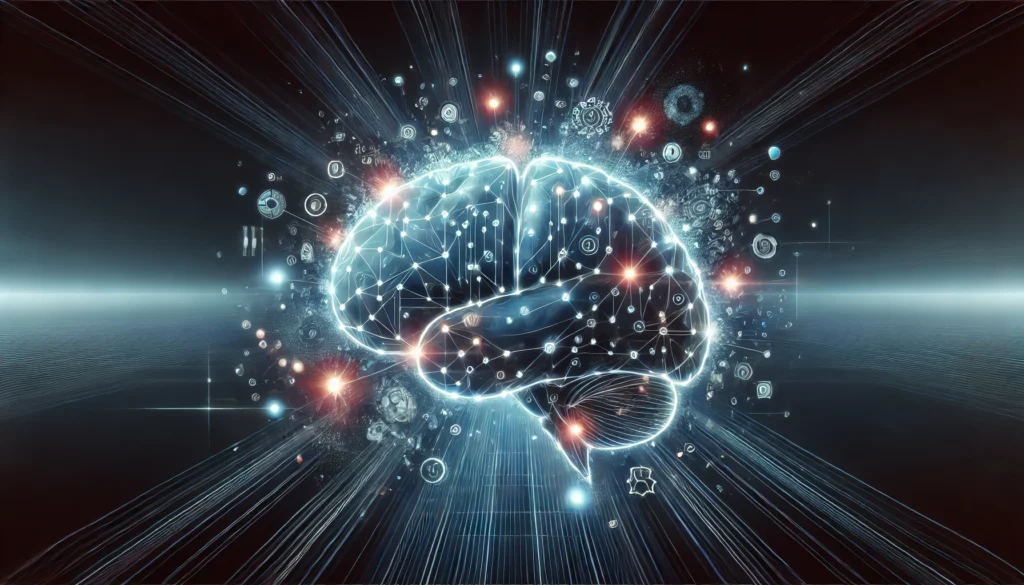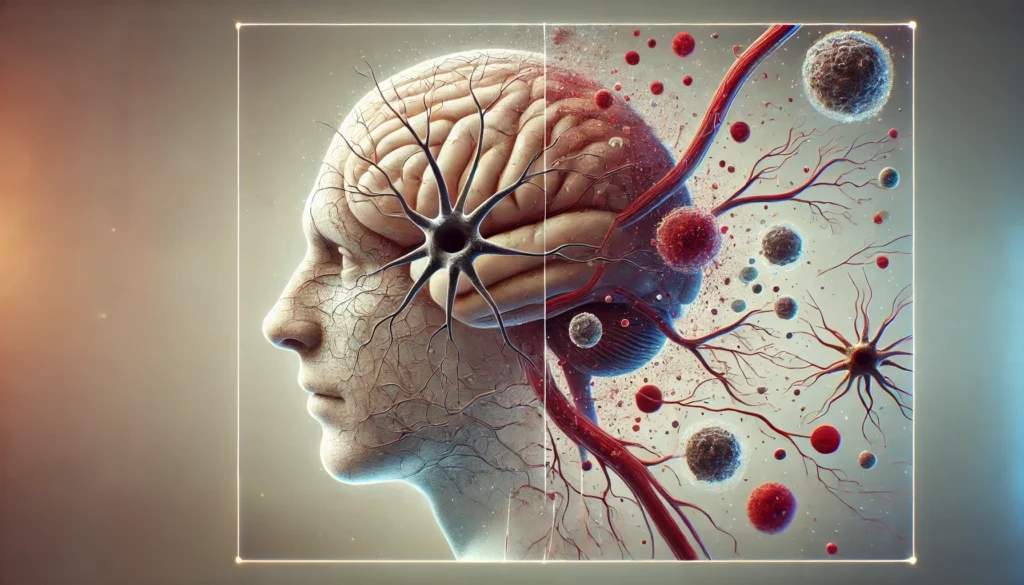Introduction
In an era where brain health is emerging as a critical pillar of overall well-being, understanding neurocognitive problems and the types of cognitive disorders affecting individuals across the lifespan is more important than ever. The term “neurocognitive” refers to the intricate relationship between the brain’s physical structure and its mental functions. These functions include memory, attention, language, problem-solving, and executive functioning. When any of these areas are disrupted, a person may experience noticeable declines in daily performance, communication, or independence.
You may also like: How to Stop Cognitive Decline: Science-Backed Steps for Prevention and Brain Longevity
Neurocognitive decline may present subtly at first—such as increased forgetfulness or difficulty focusing—but it can progress to more severe symptoms that significantly impair quality of life. The challenge lies in differentiating normal cognitive aging from genuine neurological cognitive disorder, especially in older adults. Moreover, neurocognitive disorders are not exclusive to aging; they can also affect younger individuals due to traumatic brain injury, infections, substance use, or psychiatric conditions. With a deeper understanding of the causes of neurocognitive disorder, the clinical definitions of various conditions, and the latest in diagnosis and treatment approaches, families and individuals can make informed decisions to support brain health proactively and compassionately.

What Are Neurocognitive Problems?
Neurocognitive problems refer to difficulties that arise from disrupted brain function, often stemming from damage, disease, or degeneration within the central nervous system. These problems impact cognitive domains such as memory, attention, reasoning, speech, and the ability to carry out purposeful tasks. Unlike general psychological issues, neurocognitive problems have a biological basis and typically involve structural or functional brain changes observable through neurological imaging or diagnostic tests.
The severity and nature of neurocognitive problems can vary significantly depending on the underlying condition. For instance, a person recovering from a concussion may experience temporary disorientation, while someone with Alzheimer’s disease might gradually lose the ability to recognize loved ones. Early signs often go unnoticed or are misattributed to stress or aging, delaying diagnosis. Because the brain is so interconnected, a single problem can ripple outward, affecting emotional regulation, physical coordination, and social interactions. Identifying these challenges early on allows for better management and treatment outcomes.

Types of Cognitive Disorders
There are several distinct types of cognitive disorders, each with its own profile of symptoms, causes, and progression. Broadly categorized under neurocognitive disorders, these conditions may be developmental, acquired, or degenerative in nature. Among the most widely recognized types of cognitive disorders are Alzheimer’s disease, vascular dementia, frontotemporal dementia, and Lewy body dementia. Additionally, cognitive decline can result from traumatic brain injuries, infections like HIV-associated neurocognitive disorder, and chronic substance abuse.
Mild cognitive impairment (MCI) is often considered a precursor to more severe neurocognitive decline. Individuals with MCI may notice memory lapses, trouble with decision-making, or difficulty concentrating, but can generally still function independently. MCI, if untreated or unmanaged, can progress into major cognitive disorders, reducing autonomy and increasing caregiver burden. It is crucial to note that different types of cognitive disorders affect different brain regions and functions, and no two cases are exactly alike. An accurate diagnosis is the foundation for targeted interventions and long-term care planning.
Mild and Minor Neurocognitive Disorders: Understanding the Distinction
One of the most confusing distinctions in clinical language relates to mild versus minor neurocognitive disorder. Although these terms are sometimes used interchangeably, they have nuanced meanings in clinical diagnosis. A mild neurocognitive disorder is characterized by modest cognitive decline that does not interfere significantly with independence in daily activities. Individuals may require increased effort or compensatory strategies but can still function autonomously.
A minor neurocognitive disorder refers to similar symptoms but emphasizes the need for ongoing monitoring and the potential for progression. In diagnostic manuals such as the DSM-5, a minor neurocognitive disorder may be applied to individuals who display slight but measurable declines in performance on neuropsychological assessments. These conditions are not to be ignored, as early intervention can sometimes prevent or delay progression into major neurocognitive disorders.
Understanding that mild neurocognitive disorder is best defined as a functional but measurable impairment helps destigmatize these conditions. People experiencing these issues are often aware of their symptoms, leading to frustration, anxiety, or depression. Creating an empathetic and informed support system around them can significantly enhance quality of life and adherence to treatment plans.

The Biological and Environmental Causes of Neurocognitive Disorder
The causes of neurocognitive disorder are multifactorial, encompassing genetic predispositions, medical conditions, lifestyle factors, and environmental exposures. One of the leading causes is neurodegeneration, a process marked by progressive loss of neuron function and structure. Alzheimer’s disease, the most common form of dementia, is driven by the buildup of beta-amyloid plaques and tau tangles in the brain, which disrupt communication between nerve cells and eventually lead to their death.
Other common causes of neurocognitive disorder include cerebrovascular disease, which impairs blood flow to the brain; traumatic brain injury, which disrupts normal function through mechanical force; and infections such as syphilis, HIV, or Lyme disease that cross the blood-brain barrier. Psychiatric conditions like schizophrenia or severe depression can also manifest cognitive symptoms. Furthermore, chronic exposure to substances like alcohol, recreational drugs, or environmental toxins can accelerate neurocognitive decline.
Lifestyle factors such as poor diet, lack of exercise, unmanaged stress, and chronic sleep deprivation may not directly cause neurocognitive disorders, but they increase the brain’s vulnerability to damage. Conversely, a healthy lifestyle rich in antioxidants, mental stimulation, and social interaction has been shown to protect cognitive function well into old age.
Early Detection and Diagnosis of Neurocognitive Disorders
Timely diagnosis is vital in the management of any neurological cognitive disorder. While some cognitive changes are part of normal aging, distinguishing between benign forgetfulness and pathological decline can be difficult without professional evaluation. A thorough diagnostic process includes clinical interviews, medical history analysis, neuropsychological testing, and often brain imaging techniques like MRI or CT scans.
Biomarkers such as cerebrospinal fluid analysis for amyloid and tau proteins are increasingly used to confirm Alzheimer’s disease. Genetic testing may be appropriate in cases with a family history of early-onset dementia. It is also essential to rule out reversible causes, such as vitamin B12 deficiency, thyroid dysfunction, or medication side effects, before confirming a neurocognitive diagnosis.
The benefits of early detection include the opportunity to start treatments that may slow progression, access to clinical trials, and the ability to plan for future care needs. Individuals and families can also make important legal and financial decisions while cognitive abilities are still intact.

How Neurocognitive Decline Progresses Over Time
Neurocognitive decline can be gradual or rapid, depending on the cause and individual circumstances. In degenerative diseases like Alzheimer’s, the process typically unfolds in stages. Early stages may involve short-term memory loss, confusion in unfamiliar environments, or difficulty with word-finding. As the condition advances, patients may struggle with recognizing familiar faces, performing basic tasks, or maintaining personal hygiene.
Eventually, severe neurocognitive decline results in complete dependence on caregivers and an inability to communicate effectively. Non-degenerative causes such as traumatic brain injuries may show a period of rapid decline followed by stabilization or partial recovery. The unpredictability of progression makes consistent monitoring and flexible treatment plans essential.
Caregivers often play a crucial role in observing and managing the signs of neurocognitive decline. Their reports help healthcare providers make adjustments to treatment plans, introduce supportive therapies, or initiate transitions to higher levels of care. Understanding this progression also helps families emotionally prepare for the evolving needs of their loved one.
The Role of Neurology in Managing Cognitive Disorders
Neurologists are at the forefront of diagnosing and managing neurological cognitive disorders. These specialists use advanced diagnostic tools to assess brain structure and function, identify underlying pathologies, and track disease progression. Their role includes coordinating with psychiatrists, geriatricians, occupational therapists, and speech-language pathologists to develop a comprehensive treatment plan.
Neurologists often prescribe medications to manage symptoms or slow disease progression. For instance, cholinesterase inhibitors and NMDA receptor antagonists are commonly used in Alzheimer’s treatment. Newer approaches include monoclonal antibodies that target amyloid plaques, offering hope for modifying the disease course rather than just treating symptoms. Neurologists also recommend lifestyle changes, cognitive rehabilitation, and support groups to enhance quality of life.
With ongoing research and emerging therapies, the field of neurology continues to expand its toolkit for addressing neurocognitive problems. Patients and families should seek care from specialists with expertise in cognitive disorders to ensure the most accurate diagnosis and effective management strategies.
Rehabilitation and Therapeutic Approaches to Cognitive Disorders
Rehabilitation plays a vital role in helping individuals adapt to the limitations imposed by neurocognitive disorders. Cognitive rehabilitation involves targeted exercises and strategies designed to improve memory, attention, and problem-solving abilities. These interventions are often delivered by neuropsychologists or occupational therapists and are tailored to the individual’s unique strengths and weaknesses.
Speech-language therapy is beneficial for those with language impairments, while physical therapy may be needed for individuals with motor coordination issues due to neurological injury. Psychotherapy can also address the emotional challenges that accompany cognitive decline, including depression, anxiety, and frustration.
Assistive technologies like reminder apps, voice-activated assistants, and smart home devices can enhance independence. Educational tools and caregiver training improve outcomes by ensuring that support systems are knowledgeable and responsive. Ultimately, rehabilitation aims not just to restore function but to preserve dignity and autonomy for as long as possible.
Frequently Asked Questions
1. What are neurocognitive problems, and how are they different from mental illnesses?
Neurocognitive problems are disorders that affect the brain’s ability to think, remember, and process information. They are typically caused by physical or structural changes in the brain due to injury, disease, or degeneration. Unlike mood or anxiety disorders, which fall under the category of mental illnesses, neurocognitive disorders are rooted in biological impairments. Examples include Alzheimer’s disease, traumatic brain injury, and Parkinson’s-related dementia. Although symptoms can overlap with psychiatric conditions, the underlying causes and treatment strategies differ significantly.
2. What are the common types of cognitive disorders?
Common types of cognitive disorders include Alzheimer’s disease, vascular dementia, frontotemporal dementia, Lewy body dementia, and mild cognitive impairment. These conditions vary in their onset, symptoms, and progression. For example, Alzheimer’s primarily affects memory in its early stages, while frontotemporal dementia may present with personality changes or impaired judgment. Understanding the types of cognitive disorders helps in tailoring treatment approaches and setting realistic expectations for caregivers and patients alike.
3. How does neurocognitive decline impact daily life?
Neurocognitive decline can interfere with essential functions like remembering appointments, managing finances, or communicating effectively. Early-stage decline may go unnoticed or be dismissed as stress or aging, but over time, the symptoms become more pronounced. Tasks that were once second nature become difficult or impossible without assistance. This decline also affects emotional well-being, as individuals may become frustrated, anxious, or withdrawn due to their impairments. Supportive interventions can slow the decline and maintain quality of life for longer periods.
4. What causes neurocognitive disorder, and can it be prevented?
There are many causes of neurocognitive disorder, including genetic factors, brain injuries, neurodegenerative diseases, infections, and substance abuse. While some causes like genetics cannot be changed, others can be influenced by lifestyle choices. Engaging in regular physical activity, eating a balanced diet, managing chronic conditions, and staying mentally and socially active can reduce the risk. Early medical intervention in response to symptoms is key to preventing further decline or managing the progression effectively.
5. What is the difference between a mild and minor neurocognitive disorder?
A mild neurocognitive disorder is best defined as a condition that involves modest cognitive impairment but does not significantly interfere with everyday functioning. Individuals with this diagnosis can still maintain independence but may require compensatory strategies. A minor neurocognitive disorder refers to a similar concept but may be used more loosely to describe early-stage symptoms that warrant observation. Both conditions are indicators of underlying brain changes that should be monitored and addressed through appropriate interventions.
6. How are neurological cognitive disorders diagnosed?
Diagnosis involves a combination of clinical interviews, cognitive testing, and imaging studies. Doctors assess memory, language, problem-solving, and attention through standardized tests. Brain scans like MRIs or PET scans can reveal structural changes, such as brain shrinkage or lesions. In some cases, lumbar punctures are used to analyze cerebrospinal fluid for biomarkers. The process also includes ruling out reversible causes like vitamin deficiencies or thyroid problems. A multidisciplinary approach ensures accurate and early diagnosis.
7. Can children or young adults develop neurocognitive problems?
Yes, although neurocognitive problems are more common in older adults, children and young adults can also be affected. Traumatic brain injury, epilepsy, developmental disorders, infections, and substance abuse are some of the causes in younger populations. Early identification and intervention are crucial, as the developing brain has greater plasticity and potential for recovery. Tailored educational programs and therapy can significantly improve outcomes for younger individuals with cognitive impairments.
8. What treatment options are available for neurocognitive disorders?
Treatment depends on the underlying cause and severity of the condition. Medications may be prescribed to manage symptoms or slow disease progression, particularly in conditions like Alzheimer’s. Cognitive rehabilitation, speech therapy, physical therapy, and psychotherapy can support functional improvement. Lifestyle interventions such as improved nutrition, physical activity, and mental exercises also play a role. In advanced cases, caregiving support and long-term care planning become essential components of management.
9. Are there specific risk factors for developing neurocognitive disorders?
Yes, risk factors include advanced age, family history of dementia, cardiovascular disease, diabetes, head injuries, and chronic substance use. Lifestyle factors such as sedentary behavior, poor diet, and social isolation also contribute. While not all risk factors can be modified, addressing those that can be managed—like controlling blood pressure or quitting smoking—may significantly reduce the likelihood of developing a neurocognitive disorder. Routine health checkups and cognitive screenings are advisable for those at risk.
10. How can caregivers support individuals with cognitive disorders?
Caregivers play a pivotal role in supporting those with cognitive disorders. They provide emotional support, help manage medications, assist with daily activities, and ensure safety. Educating caregivers about the condition helps them respond empathetically and effectively to behavioral changes. Support groups, respite care services, and professional counseling can also reduce caregiver burnout. Building a compassionate, informed care network is essential for both the patient and their loved ones.

Conclusion
Understanding neurocognitive problems and the types of cognitive disorders that affect brain health is crucial in our aging society, where longevity often comes with neurological complexity. From early warning signs to late-stage challenges, cognitive decline is a deeply human issue that touches families, healthcare systems, and society at large. By recognizing the causes of neurocognitive disorder, distinguishing between minor and major impairments, and employing proactive treatment strategies, individuals and caregivers can better navigate this difficult terrain.
Neurocognitive decline is not inevitable, and many of its risk factors are modifiable through education, lifestyle changes, and early intervention. Even when conditions are progressive and irreversible, a holistic, compassionate, and scientifically informed approach can preserve dignity and improve outcomes. The more we understand about neurological cognitive disorders, the better equipped we are to care for those affected—and to protect our own cognitive health across the lifespan.
Was this article helpful? Don’t let it stop with you. Share it right now with someone who needs to see it—whether it’s a friend, a colleague, or your whole network. And if staying ahead on this topic matters to you, subscribe to this publication for the most up-to-date information. You’ll get the latest insights delivered straight to you—no searching, no missing out.
Further Reading:
Mispronouncing These 5 Words Could Be an Early Sign of Dementia, According to Experts
What Is the Alzheimer Disease? Understanding Early Symptoms, Misconceptions, and Cognitive Effects



